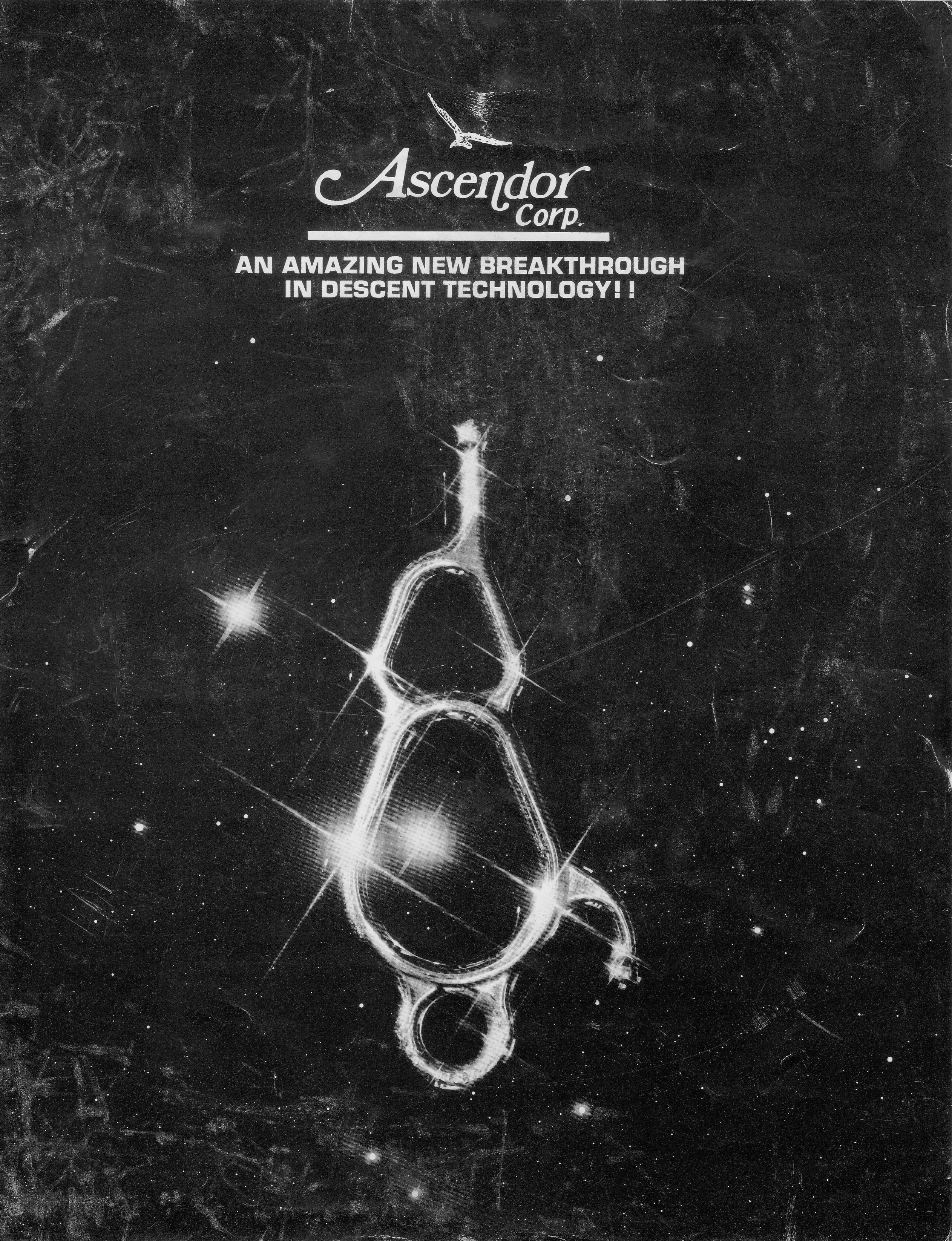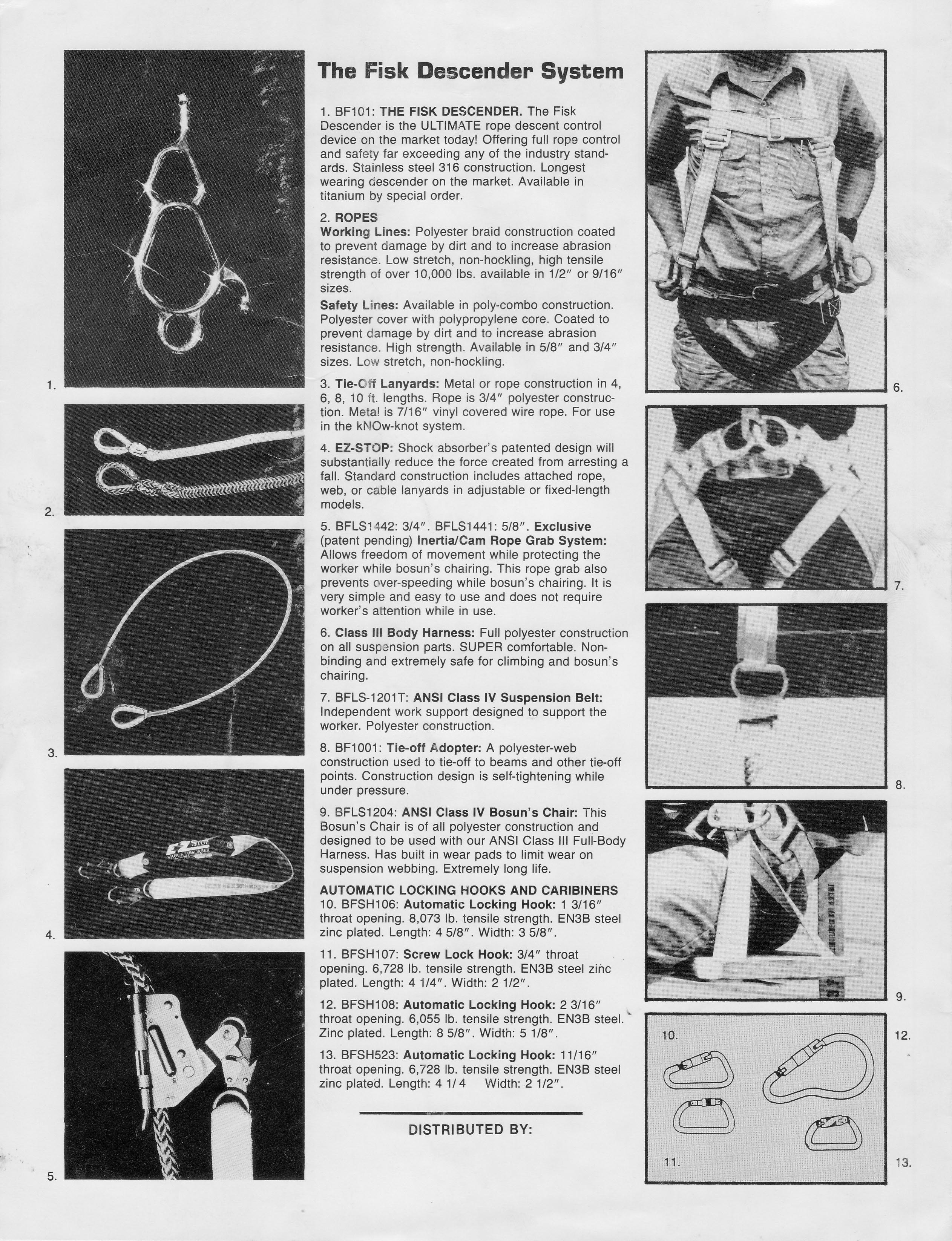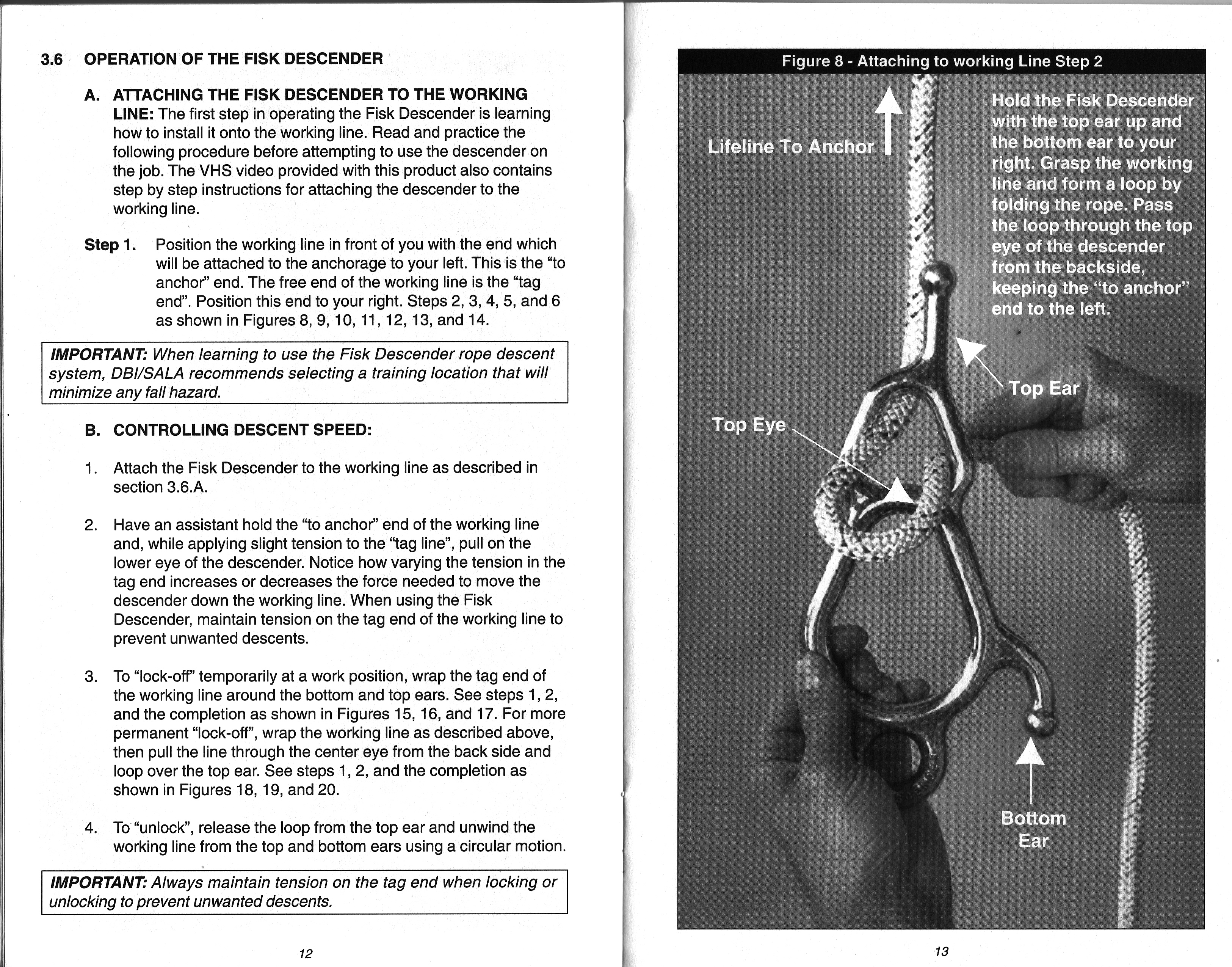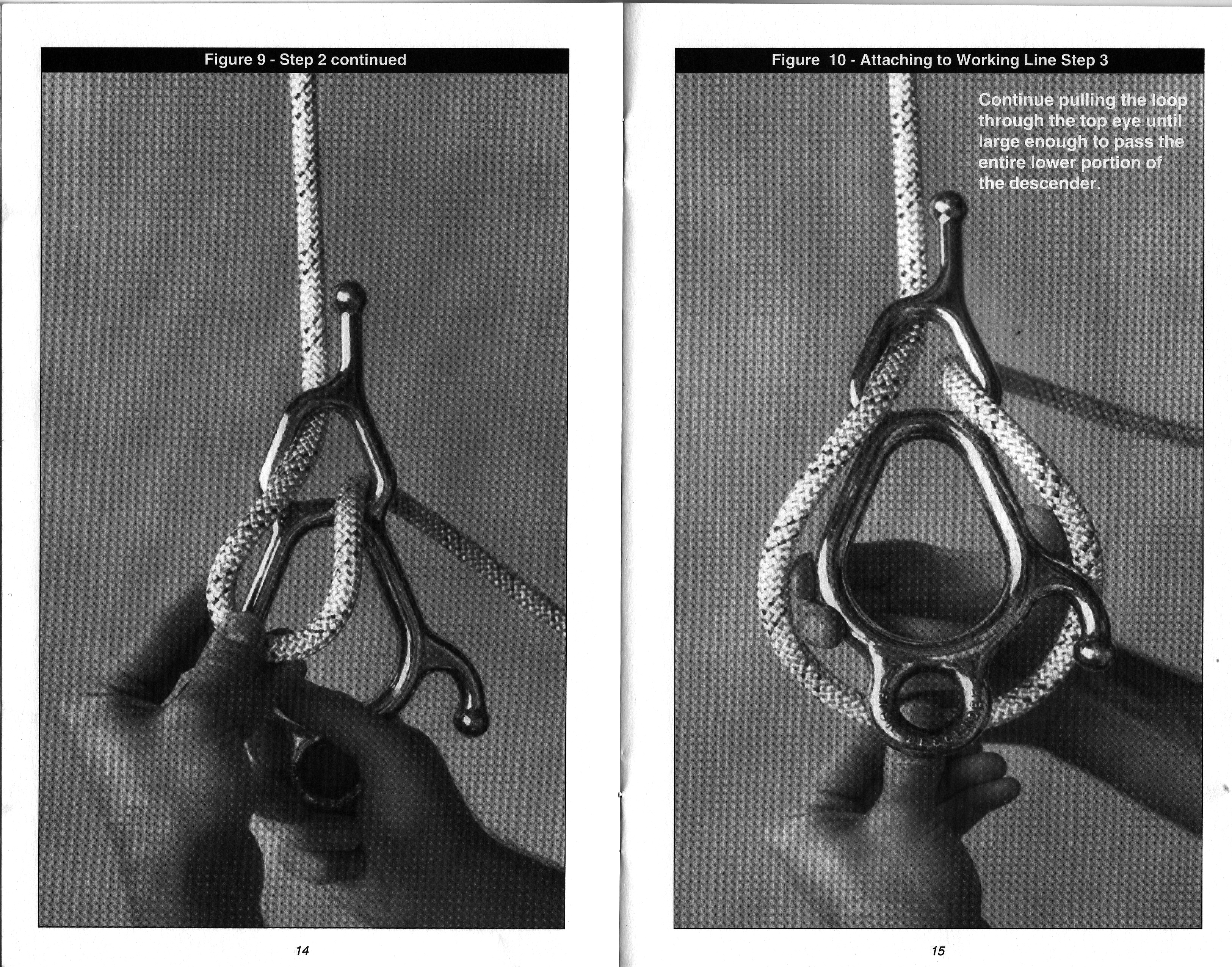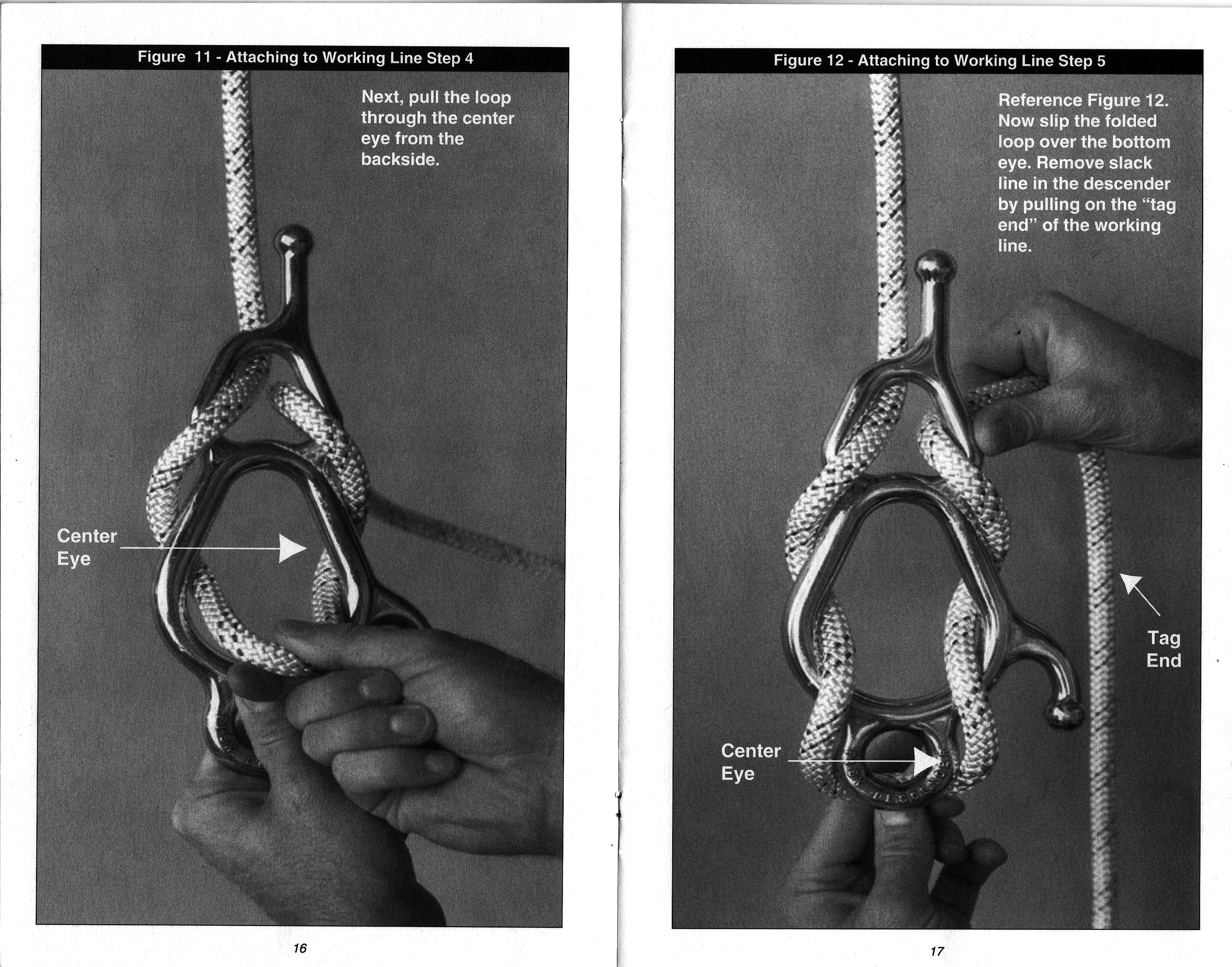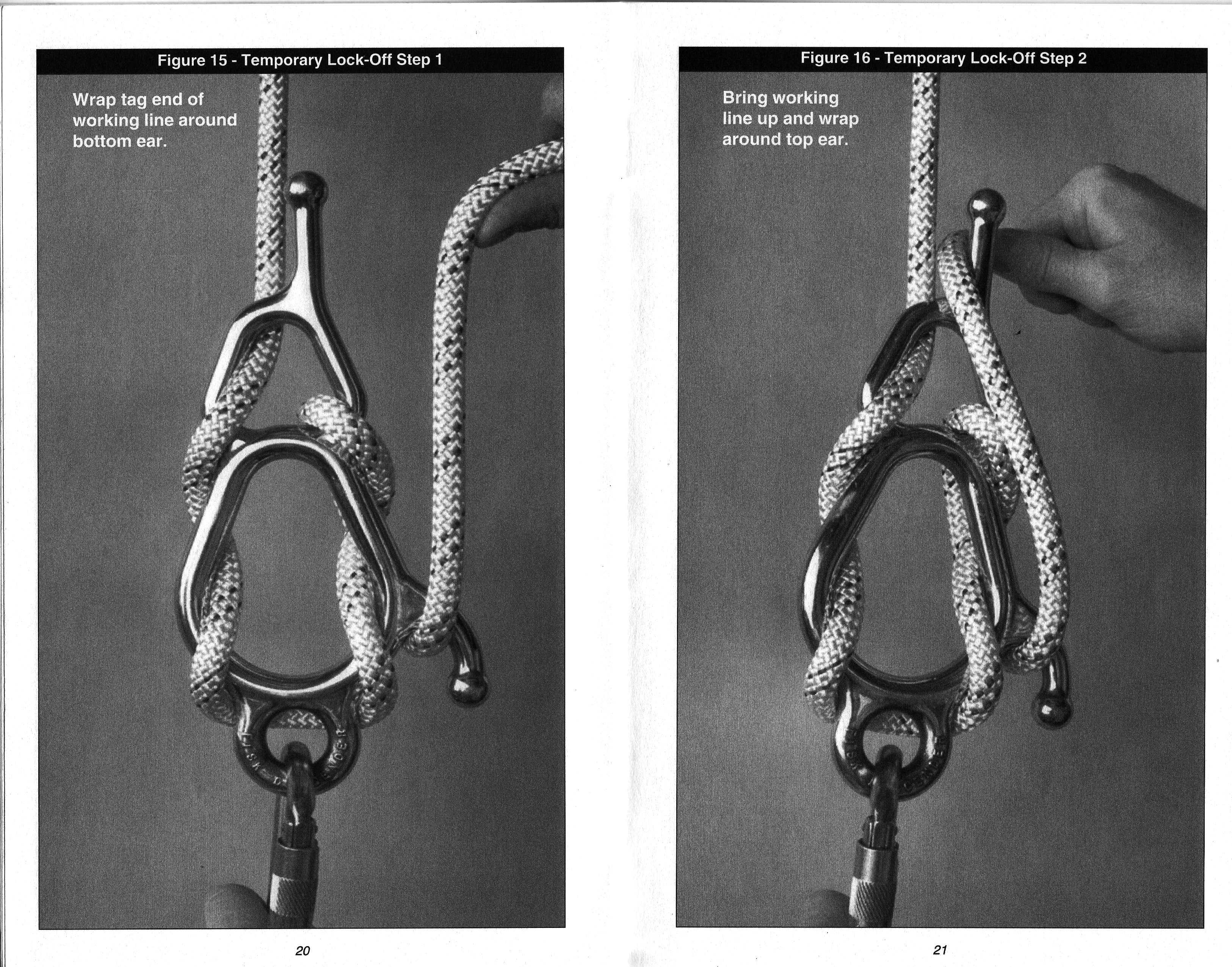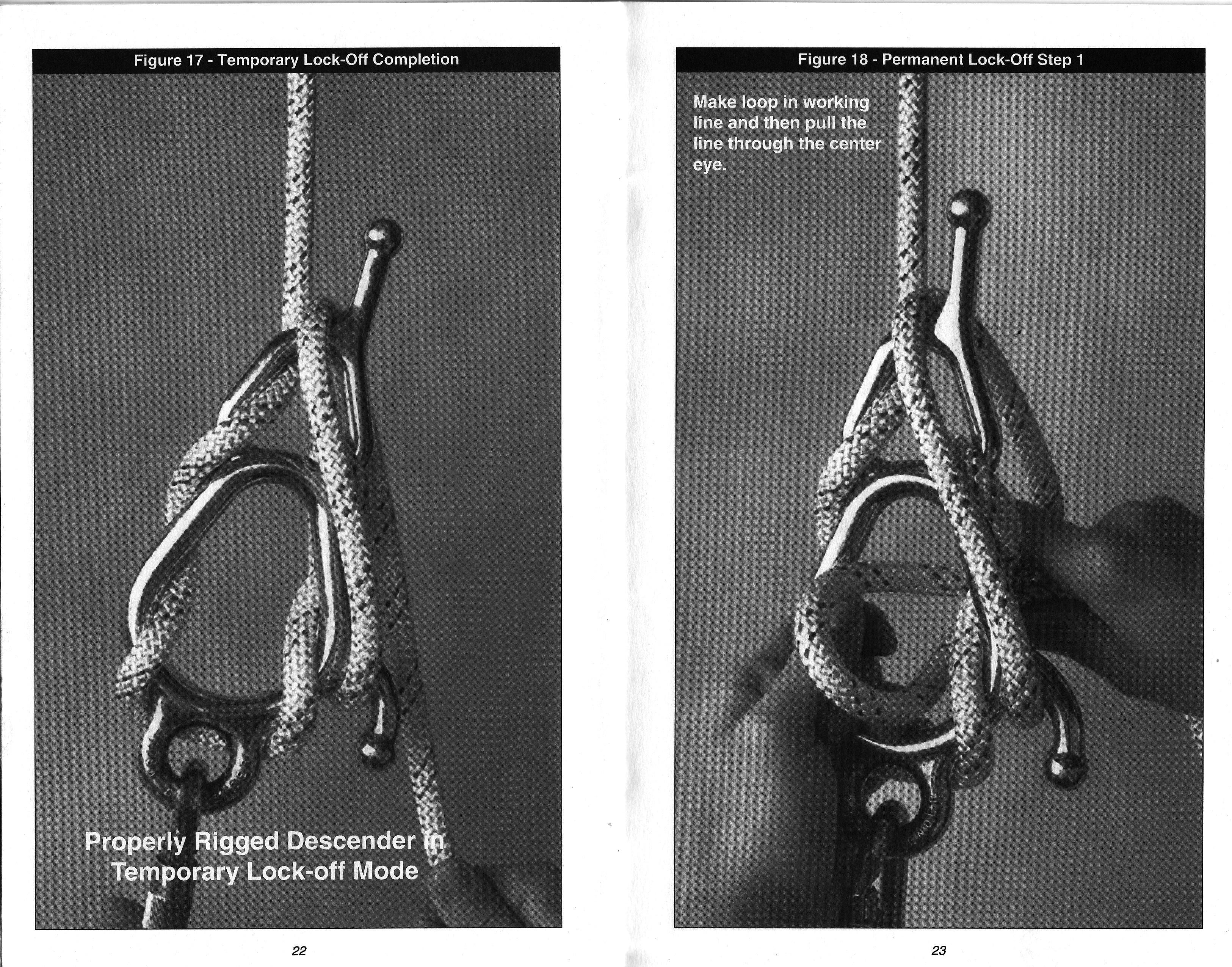Overview
[ Top
| Version B
| Version C
| Version D
| A Comment
| Return to Horns
]
Version A
(#353)
Technical Details
I acquired this descender as a gift from the manufacturer (Ascendor Corporation) in
1989. I would like to thank Brian Fisk for the descender and Bruce
Smith for arranging the donation.
Version A is 272 mm. tall, 127 mm. wide, 18 mm. thick, and weighs 837 g. The device consists of a single piece of forged 316 stainless steel, polished until it shines (the picture doesn't do it justice).
The words "FISK DESCENDER" are forged on one side of the
device, encircling the tie-in hole.
This descender is very well made. The finish is excellent,
unless you are somewhere you aren't supposed to be, when the shine
from the polished surface might give your presence away. The only
defect I see is that the "F" and parts of the "I"
and "S" in the name of the device were removed during
the finishing operation.
According the designer, the Fisk Descender is designed for
new Blue-water II rope. I've found that the device works equally
well on other kernmantle caving and climbing ropes. Like most
devices, the friction obtained depends on the rope used.
 The Fisk
descender can be rigged in a number of ways, providing a variety
of braking ratios. The most common method is similar to the double-wrap
figure 8 rigging. Since the Fisk is much larger than most figure
eights, the wraps spread out more and the resulting friction is
much less than the double-wrap eight’s. The shape of the device
and the very smooth finish also contribute to the reduced friction.
The Fisk
descender can be rigged in a number of ways, providing a variety
of braking ratios. The most common method is similar to the double-wrap
figure 8 rigging. Since the Fisk is much larger than most figure
eights, the wraps spread out more and the resulting friction is
much less than the double-wrap eight’s. The shape of the device
and the very smooth finish also contribute to the reduced friction.
This descender was designed for window washers, not cavers.
As a result, the considerations used in designing this descender
differ from those most cavers consider important. I think its
fair to evaluate the descender separately for commercial and caving
use.
 The
Fisk Descender appears to be well suited for commercial use. It
is both rugged and extremely strong. The stainless steel construction
makes the device chemically resistant to many commercial chemicals.
Rigging is simple and can be performed quickly, even with gloved
hands. In a window washing environment, the reduced setup time
translates into more flights of windows washed per hour. The horns
allow easy lock-offs. Unlocking is easy. The size and weight of
the device are not a much of a detriment when the normal ascent
method is by elevator, but the extra mass substantially increases
the heat capacity of the device relative to lighter models.
The
Fisk Descender appears to be well suited for commercial use. It
is both rugged and extremely strong. The stainless steel construction
makes the device chemically resistant to many commercial chemicals.
Rigging is simple and can be performed quickly, even with gloved
hands. In a window washing environment, the reduced setup time
translates into more flights of windows washed per hour. The horns
allow easy lock-offs. Unlocking is easy. The size and weight of
the device are not a much of a detriment when the normal ascent
method is by elevator, but the extra mass substantially increases
the heat capacity of the device relative to lighter models.
The device was not designed for caving or climbing, and most
cavers (all climbers) would consider it too large and heavy for
routine use. Perhaps some of the less-informed would-be rescue
types see this as an advantage in its own right, but most of the
more knowledgeable ones would disagree. I think the device may
have a place in certain cave rescue situations. It probably can't
replace the rack, but it might be better than the figure-8 in
most cave rescue situations. Comparing the Fisk to the figure-8
in more routine caving situations, the ease of locking-off the
Fisk does not offset the additional weight, so I prefer the eight.
Ascendor Corporation once offered a titanium version of the Fisk
descender, available on special order. I haven't had a
chance to try one (in fact, I've never seen one), but I suspect it would perform much like the
stainless steel version. Titanium offers excellent chemical and
wear resistance at about 60% of the weight of stainless steel.
Depending on the titanium alloy chosen, I’d estimate that the
weight of the titanium Fisk would be about 500 g.
[ Top
| Version A
| Version C
| Version D
| A Comment
| Return to Horns
]
Version B
(#1223)
Technical Details
I acquired one Fisk Descender, Version B from Jeff Laycock in 2009 and a second from Tony Lam in 2011.
Version B is 272 mm. tall, 127 mm. wide, 18 mm. thick, and weighs 836 g.
The words "FISK DESCENDER ™" are forged on the front side of the
device, encircling the tie-in hole. The rear has "U.S.PAT.NO.4,723,634" forged below the eye, and a recess with "0089" stamped above.
Version B is essentially the same as Version A, except for the markings. Version B is made and distributed by DBI/SALA. It came with a 34 page instruction manual that devoted 14 pages to showing me how to rig the descender.
[ Top
| Version A
| Version B
| Version D
| A Comment
| Return to Horns
]
Version C
(#1448)
Technical Details
I acquired my Fisk Descender, Version C from Westside Pawn LLC in 2015.
Version C It is 274 mm. tall, 128 mm. wide, 19 mm. thick, and weighs 890 g.
The words "FISK DESCENDER ™" are forged on the front side of the
device, encircling the tie-in hole. The rear has "U.S.PAT.NO.4,723,634" forged below the eye, and a recess with "PKR" stamped above.
Version C has a much heavier lower horn than the others. I don't see any need for the additional mass (the others certainly appear more than strong enough), but the Fisk was not designed to be lightweight.
The top horn has a slight inward bend; again, I don't see a practical implication.
[ Top
| Version A
| Version B
| Version C
| A Comment
| Return to Horns
]
Version D
(#3034)
Technical Details
I acquired my Fisk Descender, Version D from Firat Ozler in 2021.
Version D is 276 mm. tall, 126 mm. wide, 19 mm. thick, and weighs 905 g.
The words "FISK DESCENDER" followed by "TM" inside an ellipse are stamped on the front side of the
device, encircling the tie-in hole. "TAIWAN" (inverted) is stamped above the hole. The rear has "U.S.PAT.NO.4,723,634" stamped below the eye, and a recess with "PKR" stamped above.
Version D is similar to Version C, with the added "TAIWAN" marking. It is also slightly heavier.
The top horn on Version D does not have the inward bend found on Version C.
[ Top
| Version A
| Version B
| Version C
| Version D
| Return to Horns
]
An Unsolicited Comment
Here is an unsolicited letter from an experienced Fisk descender
user:
Dr. Gary Storrick,
My name is Ed Van Ness and I work for a small consulting
company, ComTrain, that is located in Monroe WI. Our primary
goal is the education and training of individuals who work on
communications towers. Our most popular training course is called
"Tower Climbing Safety and Rescue" and has been provided
to some 2000 plus students around the world.
Our program is a certification program recognized by most all
of the major 2-way carriers as well as most departments of the
federal government, i.e. Coast Guard, BLM, Navy, Marines, Border
Patrol, and many others.
We educate the students in the world of tower safety and include
the means to rescue someone from any height. Our preferred rescue
device is the Fisk descender. We have compared it to many others
and find it to be the simplest (no moving parts) and most user
friendly control device available. It’s nearly indestructible
and offers the degree of friction control needed during emergencies.
Used with a 14 or 16 mm. kernmantle rope we feel it can't be beaten.
In addition, many of the jobs on a tower require someone work
in suspension and the Fisk does it all. This is not a promotional
for the unit but we do feel that in the hands of a practiced
individual it’s everything they need for both daily work activities
and as a rescue tool in an emergency. A portion of our training
class has each student perform a rescue of a fellow student who
is suspended from a tower. We’ve never had a problem with the
unit and the students seem to love it. They bring all kinds of
other descent tools with them and walk away being extremely pleased
with the Fisk.
We’ve introduced the unit around the world and have since found
a good many of our clients have adopted use of the Fisk as their
preferred working and rescue tool.
Call this what you’d like but I thought I’d add my two cents
about a tool we think very highly of.
Respectfully,
Ed Van Ness
ComTrain
[ Top
| Version A
| Version B
| Version C
| Version D
| A Comment
]



 The Fisk
descender can be rigged in a number of ways, providing a variety
of braking ratios. The most common method is similar to the double-wrap
figure 8 rigging. Since the Fisk is much larger than most figure
eights, the wraps spread out more and the resulting friction is
much less than the double-wrap eight’s. The shape of the device
and the very smooth finish also contribute to the reduced friction.
The Fisk
descender can be rigged in a number of ways, providing a variety
of braking ratios. The most common method is similar to the double-wrap
figure 8 rigging. Since the Fisk is much larger than most figure
eights, the wraps spread out more and the resulting friction is
much less than the double-wrap eight’s. The shape of the device
and the very smooth finish also contribute to the reduced friction. The
Fisk Descender appears to be well suited for commercial use. It
is both rugged and extremely strong. The stainless steel construction
makes the device chemically resistant to many commercial chemicals.
Rigging is simple and can be performed quickly, even with gloved
hands. In a window washing environment, the reduced setup time
translates into more flights of windows washed per hour. The horns
allow easy lock-offs. Unlocking is easy. The size and weight of
the device are not a much of a detriment when the normal ascent
method is by elevator, but the extra mass substantially increases
the heat capacity of the device relative to lighter models.
The
Fisk Descender appears to be well suited for commercial use. It
is both rugged and extremely strong. The stainless steel construction
makes the device chemically resistant to many commercial chemicals.
Rigging is simple and can be performed quickly, even with gloved
hands. In a window washing environment, the reduced setup time
translates into more flights of windows washed per hour. The horns
allow easy lock-offs. Unlocking is easy. The size and weight of
the device are not a much of a detriment when the normal ascent
method is by elevator, but the extra mass substantially increases
the heat capacity of the device relative to lighter models.